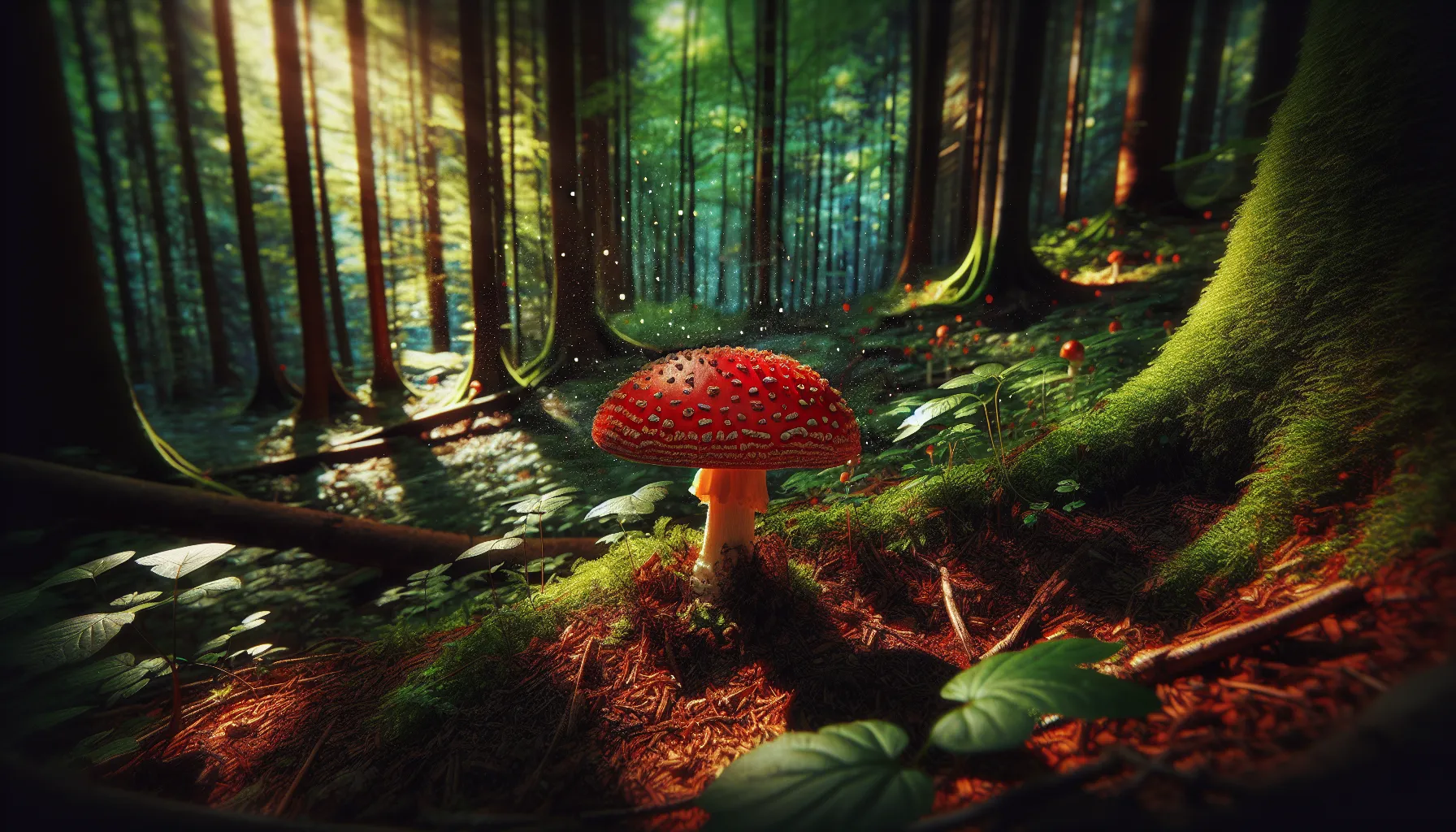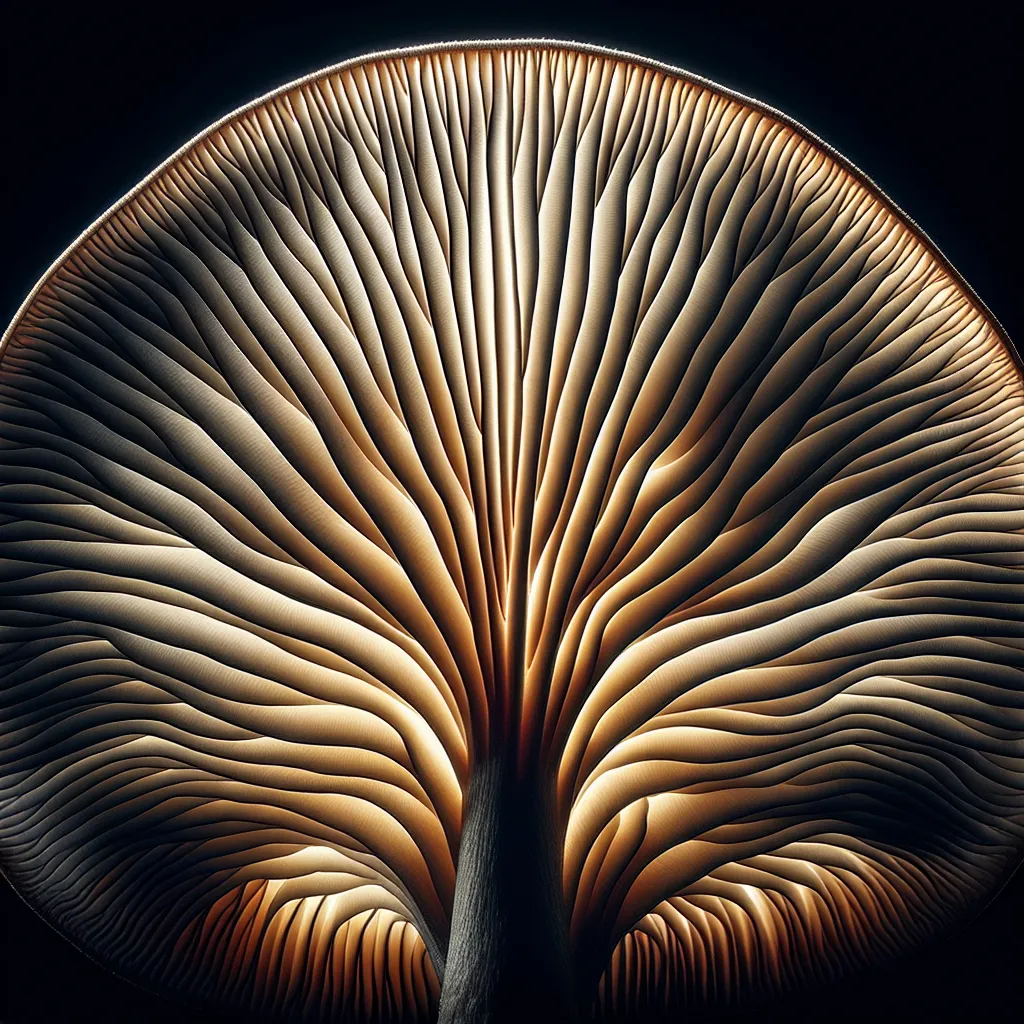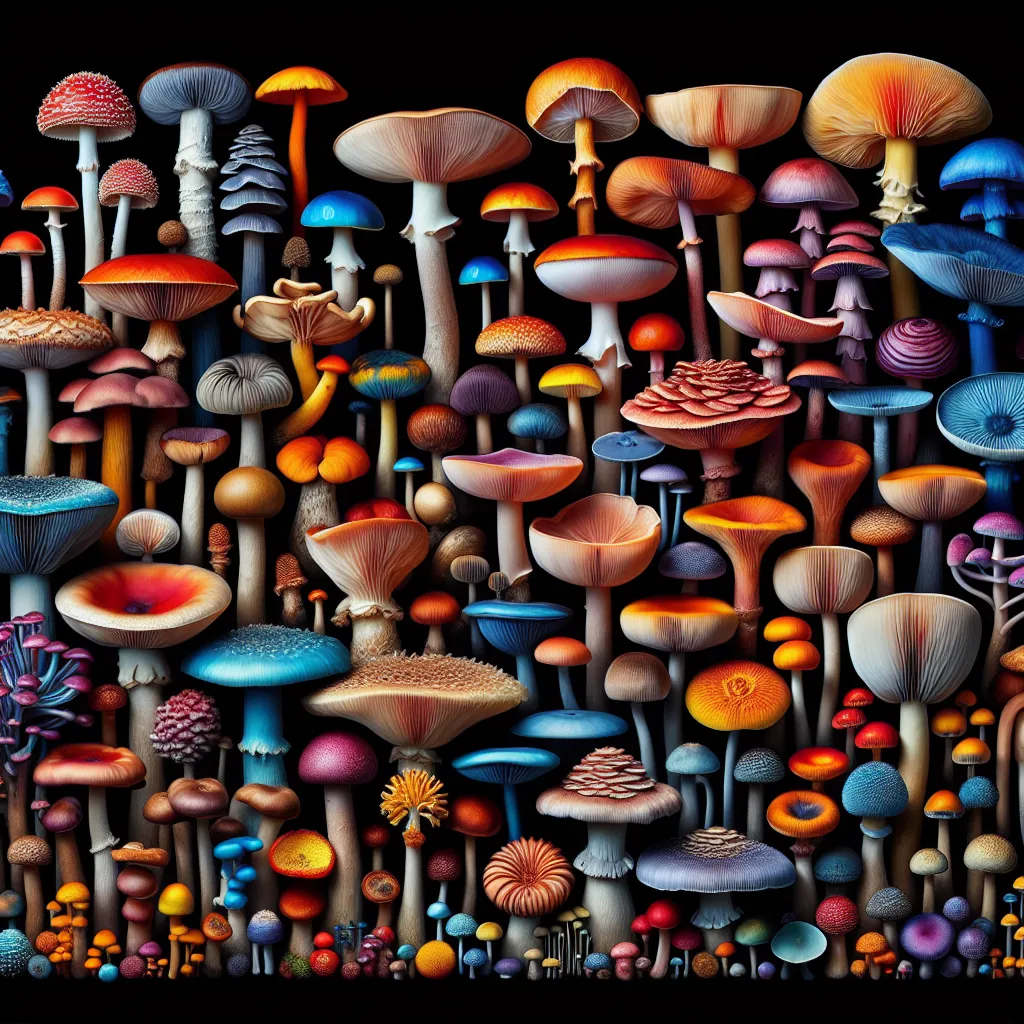Mushroom foraging is a rewarding hobby that invites enthusiasts into a world of fascinating diversity and natural beauty. To navigate this world safely and effectively, it’s crucial to develop a keen eye for identifying various mushroom species. This article aims to equip you with a visual guide and valuable resources to enhance your mushroom identification skills.
Understanding the Basics
Before venturing into the forest, it’s essential to understand the basic morphology of mushrooms. A typical mushroom consists of a cap, gills or pores underneath, a stem, and sometimes a ring (annulus) or a bulbous base (volva). Familiarizing yourself with these parts is the first step in identification.
Start with Common Species
Begin your journey by learning about common species that are easily identifiable. Species like the Amanita muscaria with its iconic red cap and white spots, or the Morchella esculenta, known as the morel, are distinct and a good starting point for beginners.

Color and Shape
The color and shape of a mushroom can vary widely, even within the same species. While color is an important characteristic, it should not be the sole determiner, as it can change with age, weather, and other environmental factors. Shape, on the other hand, can provide more consistent clues, as some mushrooms have unique silhouettes, such as the shelf-like appearance of oyster mushrooms (Pleurotus ostreatus).
Gills, Pores, and Spore Prints
A critical identification method is examining the gills or pores where spores are released. Some mushrooms have gills underneath the cap, while others have pores or teeth. Taking a spore print can also aid in identification, as spore colors can range from white to pink, brown, or black.

Habitat and Season
The environment where a mushroom grows can be a significant indicator of its species. Some prefer the base of certain trees, others thrive in open fields, and some are found only in very specific ecological niches. Additionally, mushrooms have varying seasonal patterns, with certain species emerging in specific weather conditions or times of the year.
For a deeper dive into mushroom habitats, MushroomExpert.Com offers a wealth of information on the ecological preferences of different fungi. You can explore detailed profiles of species and their preferred environments at Mushroom Expert.
Handling Mushrooms
Always handle mushrooms with care. Some species can be toxic, and it is essential to avoid consuming any mushroom unless you are absolutely certain of its identity. Use gloves if possible, and always wash your hands after handling unknown specimens.
For more information on mushroom toxicity and safe handling practices, visit the North American Mycological Association website at NAMA.
Using Field Guides and Apps
Field guides are a mushroom hunter’s best friend. They provide images, descriptions, and details that can help you identify mushrooms in the wild. There are also several smartphone apps designed for mushroom identification, which can be helpful tools for enthusiasts.
A highly recommended field guide is Mushrooms Demystified by David Arora, a comprehensive resource for North American fungi. For a digital approach, iNaturalist offers an app where users can upload photos of mushrooms and receive help with identification from a community of experts. Find it at iNaturalist.
Joining Local Mycological Societies
One of the best ways to improve your mushroom identification skills is to join a local mycological society. These organizations often offer field trips, workshops, and access to experienced mycologists who can provide hands-on learning opportunities.
The Mycological Society of America has a directory of local clubs and societies that can be accessed at MSA.
Conclusion
Identifying mushrooms is an art that combines careful observation with a knowledge of the natural world. It requires patience, practice, and a respect for the fungi you encounter. With the right approach and resources, you can master the skill of mushroom identification and enjoy the wonders of mycology in a safe and informed manner.
Remember, never consume a mushroom based on visual identification alone. Always consult multiple sources and, when in doubt, seek expert advice. Happy foraging!

